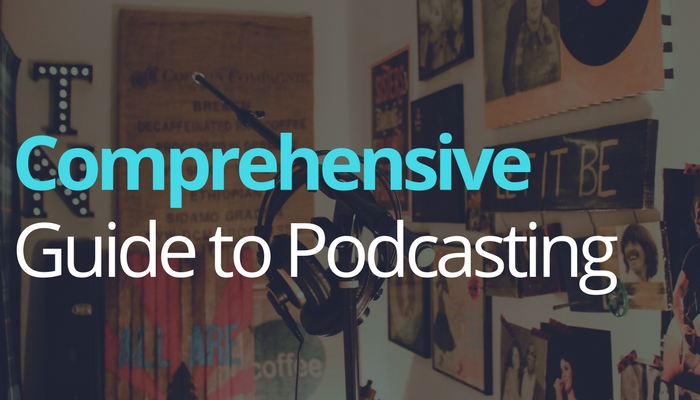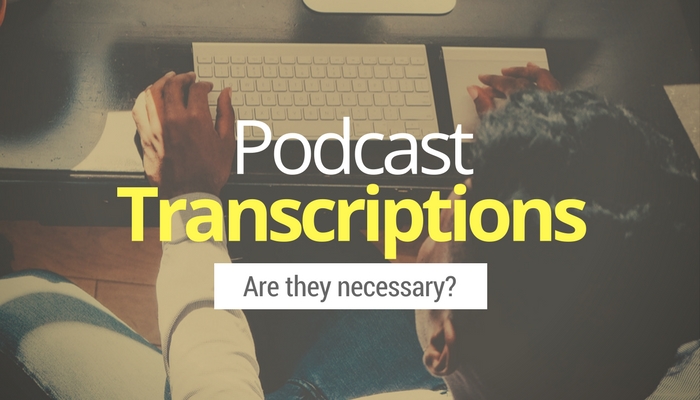
Podcasting is a very exciting and trending medium today. Having transcribed podcasts for the last couple of years now, we often come across people struggling with setting it up, finding the right hardware to record and transcribing the podcasts in a way that it adds value to the listeners.
Podcasting has grown phenomenally in the last couple of years, so much so that individuals and businesses are increasingly using this medium to connect with their users, give them relevant information often as byte-sized nuggets and establish their expertise in a particular field. The growth of this medium has also resulted in the flourishing of other support services, podcast transcription services being one among them.
Audio-based ‘podcasts’ are anytime easier to consume than the visual or digital medium. They can be listened to when driving, carrying out tasks and require the attention of just a single ‘sense’. If you are someone who loves exploring new mediums, now is the time to get onto the ‘podcasting’ bandwagon. All you have to do is record, and everything else including podcast transcription can be managed by third party vendors.
As easy as it sounds, many people often set themselves up for failure because they miss the basics required to do a good job. The main reason podcasting doesn’t deliver is because the listeners aren’t hooked. That is why we’ve put together a few tips on how doing a few things right can give you a perfect podcast.
Invest in a good quality microphone
A good podcast always begins by using a good voice capture device, which is a mike. You might think that any mike works fine, but in reality, a quality mike not just captures the voice, but also balances it and picks up the timbre and tone. This is very critical or else there’s much work for you or a podcast transcriber afterward. There are several good quality microphones that work just fine. For an entry level one, the Logitech Clearchat Headset Mike and the AudioTechnica ATR2100 USB are equally good. They provide quality audio and cost less.
Record in a room that reduces echo
Hard and harsh surfaces reflect sound and cause echoes or additional noise which are all picked up by the mike. This might also seem irrelevant but think of the harshness that will resonate when sound strikes the floor! Avoid rooms with hard floors, tiles and bare walls. You can choose bedrooms because they are furnished. Closets are great if you have one that is perfect for your purpose.
Invest in pop filters
Pop filters dampen the sound of your breath so they don’t sound as harsh when your mouth is over the mike. Using a phone often makes you do the adjustment inadvertently, but mikes are very sensitive and they pick up your breathing just as easily. Fitting out pop filters makes it easy for you to edit your audio and is also easy on the ears for your listeners.
Switch off fans and air conditioning during recording
Switching off gadgets of any kind, even minimizing sounds outside the home is a must as these sounds are easy to avoid. Podcast transcripts will be a lot more difficult to create because of this.
Check where your microphone is placed
One very important thing to remember about podcasting is to make sure the condenser ( the round bulb of the mike) is lined with your nose. Keeping your face 6-12 inches away from it will ensure you get the best output. Keeping your face too close to it distorts the voice, and when too far, makes your voice sound distant.
Check your sound levels
Please remember is to check your sound levels constantly. If you record too loud, your voice will sound distorted, muddy and garbled. Also, louder the volume, more pronounced are the sounds of the room that will be picked up by your listeners. Always ensure that your sound levels are fully in green, some amount in yellow but never in red.
Leave clue for edits
Whether you edit your own audio or a podcast transcriber does it for you, leave clues to ensure that the unwanted bits are taken out so that it is seamless when the podcast is published. For mess ups or cuts, keep some sort of signal – finger snapping – to transcribe podcast edits. Also in case, you trip up, repeat the section again so it’s easy to slice or there will be an abrupt break in the video.
Record separately for an interview
Interviews are very common among podcasters. Although there are several softwares to make a recording of interviews, especially across two locations easy, it is better to record the podcast transcripts separately and join them together during edits. This will make it easy for the podcast transcriber to shape the audio and also make it look more interesting.
Separate the music
If you want to add music at the start or the end of the podcast, do it separately. Music can be added to open up a sequence, as a filler or conclude a podcast. It is not a wise decision to play music during the recording process unless you are a podcast pro. Cutting, looping and fading can all be done later and in fact, makes the podcast sound so much better.
Podcasts transcripts help you connect quickly with your audience. If you’re hesitating to get into one, given the work that is involved, there are always podcast transcription services that do most of the work for you. All you have to do is record your part, and it is packaged depending on how you want to put it out. Have fun while you record and transcribe podcasts yourself, or hand it over to a professional podcast transcriber, especially when transcription costs are lower than ever. If you’ve found these 9 points resourceful to get started or have something more to add, leave your comments below.

